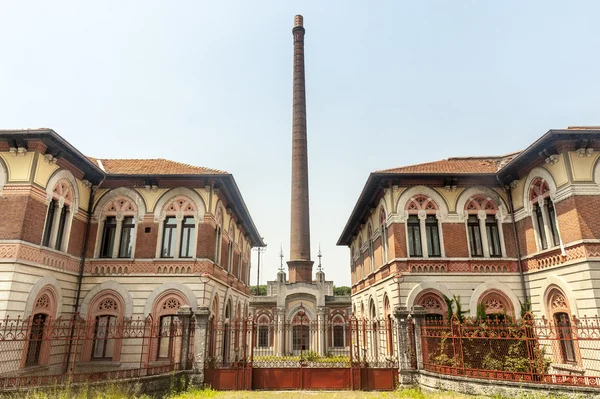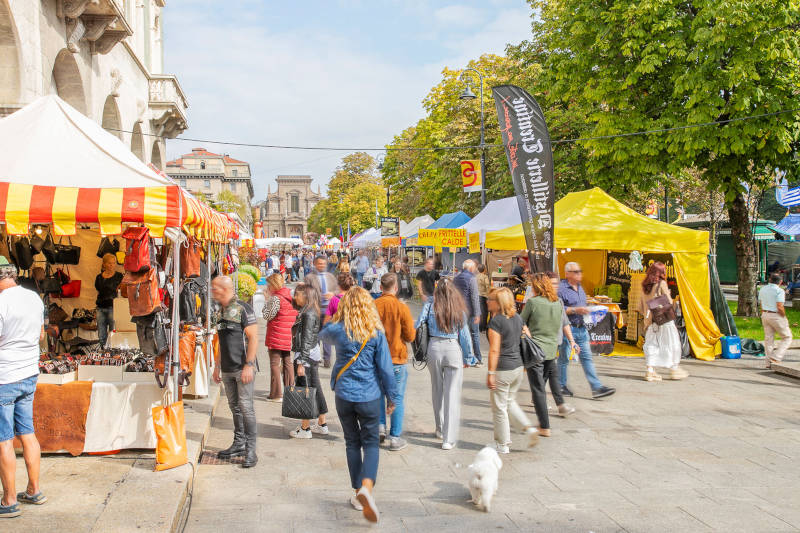Bergamo has a rich history deeply intertwined with Italy’s thriving textile industry. Situated in Lombardy, the city and its surrounding valleys became one of the key centers for textile production, particularly during the late Middle Ages and the Renaissance. The region’s strategic location, access to water from the rivers, and an abundance of raw materials provided ideal conditions for the growth of this industry. Over the centuries, textile manufacturing became a cornerstone of Bergamo’s economy, playing a significant role in its industrial development.
Early Beginnings and Growth
The textile industry in Bergamo dates back to the medieval period, when artisans began producing wool and linen fabrics, leveraging the area’s natural resources and proximity to trade routes. By the 16th and 17th centuries, local workshops began specializing in high-quality wool, silk, and cotton textiles, which were in demand across Europe. Bergamo’s weaving traditions, coupled with innovative techniques, led to the city’s reputation for producing finely crafted textiles, fueling both local commerce and international trade.
The Industrial Revolution further transformed the sector in the 19th century. Mechanized spinning and weaving mills were established, leading to a boom in production. Factories expanded throughout Bergamo and the surrounding valleys, including the Val Seriana and Val Brembana, which became hubs of textile manufacturing. The textile industry brought economic prosperity to the region, providing jobs and fostering the growth of related sectors, including dyeing, finishing, and machinery production.
Cotonificio Albini: An Icon of Bergamo’s Textile Tradition
Among the many textile enterprises in the Bergamo region, Cotonificio Albini stands out as a symbol of excellence and tradition. Founded in 1876 by Zaffiro Albini in Albino, a small town near Bergamo, the company quickly rose to prominence as a leading manufacturer of high-quality cotton fabrics. Known for its meticulous craftsmanship and innovation, Cotonificio Albini became synonymous with luxury shirting fabrics, supplying renowned fashion brands across the globe.
Over the years, Cotonificio Albini has maintained a commitment to sustainability and technological advancements, continuing to evolve while preserving its deep-rooted traditions. Today, the company operates with a focus on quality, craftsmanship, and eco-friendly practices, producing fabrics that reflect both the heritage and modernity of the Bergamo textile industry. The Albini family, now in its fifth generation, continues to lead the company, ensuring that the legacy of Bergamo’s textile craftsmanship lives on in the global fashion industry.
Crespi d’Adda: A UNESCO Heritage Site

Another key chapter in Bergamo’s textile history is Crespi d’Adda, a remarkable example of industrial heritage and a UNESCO World Heritage site since 1995. Located near the river Adda, this 19th-century company town was founded by the Crespi family to house workers employed in their textile mill. Crespi d’Adda represents an extraordinary attempt to create a self-contained community based around a large textile factory. The town was meticulously designed with workers’ homes, a church, a school, and recreational facilities, reflecting the paternalistic approach of the Crespi family towards their employees.
The town stands as a symbol of the industrial era in Lombardy and is notable for its well-preserved architecture. Crespi d’Adda highlights the integration of urban planning and industry, providing insight into the daily lives of workers during the height of Bergamo’s textile boom. Today, it remains an important cultural and historical site, offering a glimpse into the social and economic conditions of a bygone era in Bergamo’s textile industry.
Legacy and Modern Impact
The textile industry’s legacy in Bergamo remains visible today, not only through historic factories like Cotonificio Albini but also in the numerous smaller workshops and manufacturers that still produce a wide range of textiles. Despite fierce competition from distant countries, the industry’s adaptability to modern trends – including sustainable production and innovative fabric technologies – has allowed it to endure, keeping Bergamo’s textile tradition alive in the 21st century.
Though the landscape of the industry has shifted with globalization, Bergamo’s deep connection to textiles remains a source of pride. The city’s textile history is celebrated in local museums and continues to influence fashion, design, and craftsmanship both in Italy and internationally.





